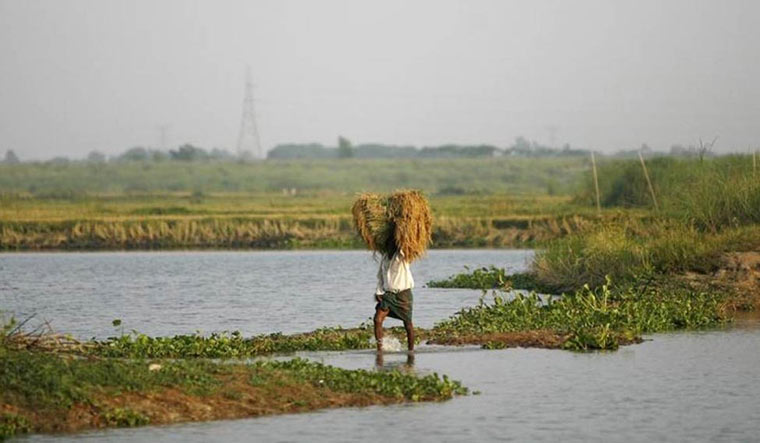There is a discrepancy between the data generated through remote sensing and what was reported from on-field study of the irrigation potential of 99 projects under the flagship irrigation scheme of Modi government, the Pradhan Mantri Krishi Sinchai Yojana (PMKSY), as mentioned in the fourteenth report of the Public Accounts Committee (PAC) headed by Congress leader Adhir Ranjan Chowdhury, that was earlier presented to the Lok Sabha Speaker and made public today.
According to a reply by the Ministry of Jal Shakti to the PAC committee on variation of results of irrigation potential between remote sensing and manual findings, satellite data says the cropped area of 99 PMKSY projects assessed by the Bhaskaracharya Institute For Space Applications and Geo-Informatics, Gujarat (BISAG) through remote sensing was 45.74 lakh hectares, while the on-field assessment of areas which can be irrigated through these projects says the irrigation potential created until June 2018 was 53.45 lakh hectares. This implies that lesser area went under cultivation than envisaged while planning these irrigation projects.
The government said this discrepancy was due to remote sensing accuracy data generated by BISAG. They offered various reasons for the variance including the availability of satellite imagery during cropping reason, the resolution of imagery varying due to the weather and thereby affecting its accuracy, and the fluctuation of cropped area based on the availability of irrigation water/rainfall/groundwater.
The PMKSY scheme was approved in 2015 for implementation across the country with an outlay of Rs. 50,000 crore over five years, with the aim of funding irrigation projects so that farmers could get water for cultivation.
The PAC urged the government to more effectively use National Remote Sensing Centre (NRSC) data and take all possible steps to effectively monitor the potential of an irrigation project.
The parliamentary panel also asked the government to push for greater participatory irrigation management with inclusion of people who would manage the water resources. It recommended that the Jal Shakti Ministry increase their efforts to facilitate formation of Water Users Associations (WUA) in each State.
The ministry on its part, during the discussion with the PAC said water user associations lacked legal backing in some states when it comes to managing, maintenance and collection of water charges by these associations. Over decades, people's participation has been seen as a must in management of irrigation sources like canals. There are close of 85,000 WUAs across the country.
The PAC studied the Accelerated Irrigation Benefits Programme in light of the CAG report on the same. The AIBP was conceived in the year 1996 for providing financial assistance to states to complete various ongoing projects in the country so that envisaged irrigation potential of the project could be created.
The PAC report said there were several deficiencies in preparation and processing of detailed project reports and these should immediately redressed. The committee recommended that action must be taken against those directly or indirectly responsible for wastage of public money, especially in cases such as Rongai Valley Project. The Committee further recommended an audit of MMI projects amounting to approximately Rs 10,000 crores.
The Committee have also noted the failure of the Centre to obtain a response from the Uttar Pradesh government on a suspected irregular expenditure of Rs 1.47 crore. It also noted the Centre's failure to recover a suspected irregular payment of Rs 2.63 crore in a case concerning the Karnataka government. The Committee have recommended the Ministry pursue such cases vigorously to its logical end.
The Committee also suggested that the Government should form a separate cell to examine all cases of undue benefits to contractors beginning with excess payments made and strive to recover the public money spent unfruitfully.



